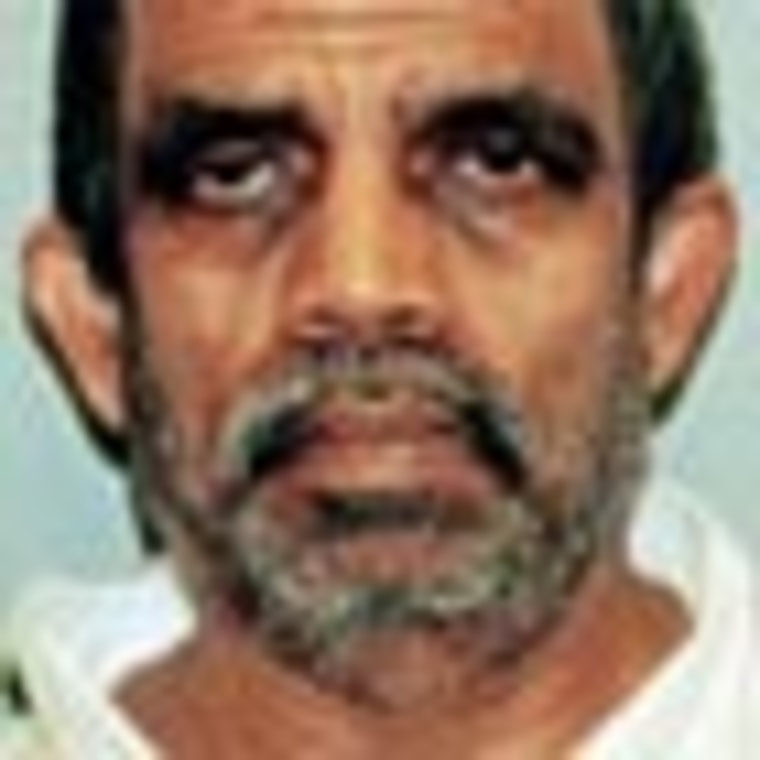• Nov. 18, 2006 |
Searching a killer's face for clues (Liz Brown, Dateline producer)
CUYAHOGA COUNTY JAIL—The first thing that struck me about Biswanath Halder was how tiny he was. The man who had terrorized an Ohio college campus and shot dead a student at point-blank range didn’t even reach the shoulders of the jail guards escorting him to our interview. As he shuffled down the corridor in an over-sized jumpsuit, clutching at a box of legal documents he never lets out of his sight, it was hard to imagine him in that other corridor more than three years ago looking for people to kill.
But then I thought back to the tape.
A large chunk of Halder’s shooting rampage at the management school of Case Western Reserve University was captured by various surveillance cameras scattered around the building. So too was the reaction to his violence-— the panic and the fear that Halder brought into people’s lives that afternoon. It’s a chilling scene. There’s one moment where a woman trying to escape pokes her head into an empty stairwell. You can see her crane her head as far as she can, desperate to know if Halder is in there, but desperate not to be shot if he is. Problem is, she can’t see around the corner and she has to decide whether to make a dash for it or turn back. What would you do? It’s a split second decision and she makes it just in time. Seconds after she runs through the corridor, Halder arrives, gun raised.

As the man who had committed such violence settled in a chair opposite Dateline correspondent Rob Stafford, I searched his face for clues. Was he a ruthless killer as some people believed? A mentally-ill loner, as his defense attorneys claimed? Or something else entirely? Halder looked nervous. He rifled through his box of documents as the crew put the finishing touches on their shot, fixing lighting, framing and - a first for me - Mr. Halder’s toupee. It was made for him, by court order, after his defense argued that he would be uncomfortable without one at trial. Halder’s own toupees had been seized as evidence, including the one he had glued into the army helmet he wore during the shooting.
Halder hadn’t testified at his trial but in a letter he had promised to tell us why he had picked up his gun. It can be tough interviewing people accused of such a horrible crime. You don’t want to feed into any desire for attention they may have, but you do want to understand. Our correspondent, Rob Stafford tried to strike a delicate balance coaxing Halder into talking about himself (something he had never really done before) and pressing him, trying to find out if he felt any remorse for what he had done. Halder appeared to have none. What was even more astonishing was the fact that he couldn’t remember the name of the man he had killed. Norman Wallace. Rob was dumb-founded. Maybe even a little angry.
We obviously never met Norman Wallace but I feel like we got to know him. I vividly remember the day his elder brother David testified. A hush descended over the courtroom as David, voice breaking, read aloud from his brother’s diary. "We often went without food, nice things," he read. “If I wanted anything I had to work hard for it. I can remember being hungry and thinking….” Here, David had to pause to wipe away his tears. “I can remember being hungry and thinking when I grow up I’m going to start my own business to help my family.” It was because of that desire that Norman was studying at Case Western Reserve University.
In the end, one of the most disturbing things for me, the day we interviewed Halder, was to discover that he, like Norman, had been chasing the American dream. He told us he had come to this country in the 1970s as a computer engineer, determined to start his own business. As a middle-aged man he had studied for his MBA at Case Western. But unlike Norman, he had no family or friends. He had lived in an attic apartment. Police photos showed a cluttered, lonely place.
I’m an immigrant too and it seemed a terrible thing that someone’s optimistic beginning had ended so badly.